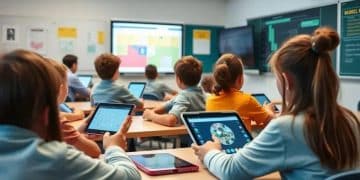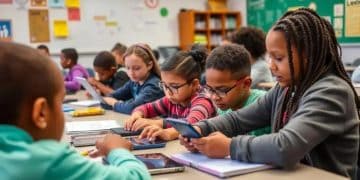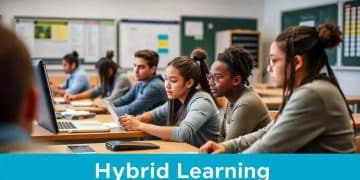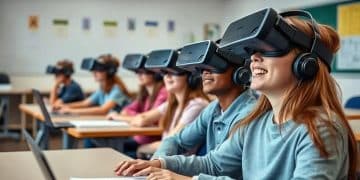AI in classrooms trends: transforming education today
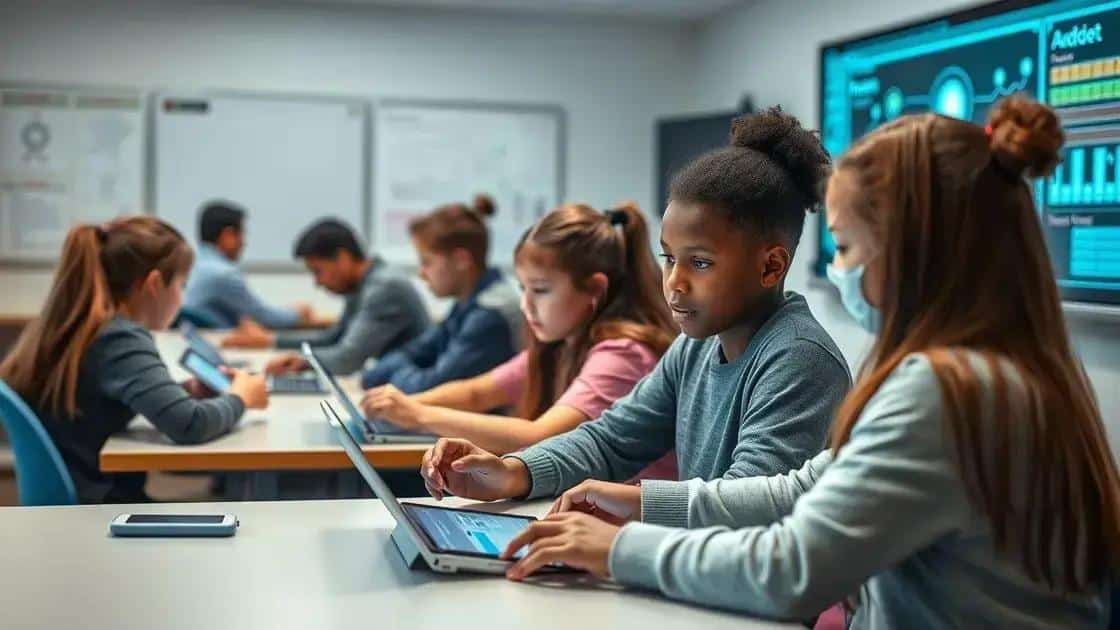
AI in classrooms trends involve leveraging artificial intelligence to personalize learning, automate tasks for teachers, and enhance student engagement, significantly transforming educational environments.
AI in classrooms trends are changing the face of education, making learning experiences richer and more engaging for students. Have you ever wondered how technology shapes the way we teach and learn today?
emerging technologies in classroom integration
Emerging technologies are revolutionizing classroom integration, providing innovative ways for teachers to engage students. These technologies include various tools that harness artificial intelligence to personalize learning experiences.
One significant advancement is the use of smartboards. These interactive boards enable teachers to present information dynamically, allowing for increased student participation. With smartboards, lessons can be tailored in real-time based on students’ feedback and engagement levels.
Benefits of Using Emerging Technologies
Incorporating technology into the classroom offers multiple advantages. For instance, students can benefit from:
- Personalized learning: Technology allows educators to adapt lessons to fit individual student needs.
- Increased engagement: Interactive tools keep students focused and motivated during lessons.
- Immediate feedback: Technologies like quizzes and assessment tools provide instant results, helping teachers adjust instruction.
Another emerging technology is virtual reality (VR). This tool immerses students in lively simulations, where they can explore historical events or scientific phenomena as if they were there. With VR, learning becomes an adventure, sparking curiosity and enhancing retention of the material.
Furthermore, the use of learning management systems (LMS) has transformed education management. These platforms allow educators to streamline assignments, track progress, and provide resources, making the teaching process more efficient. As these technologies evolve, they continue to create new opportunities for improving classroom integration.
benefits of AI for teachers and students
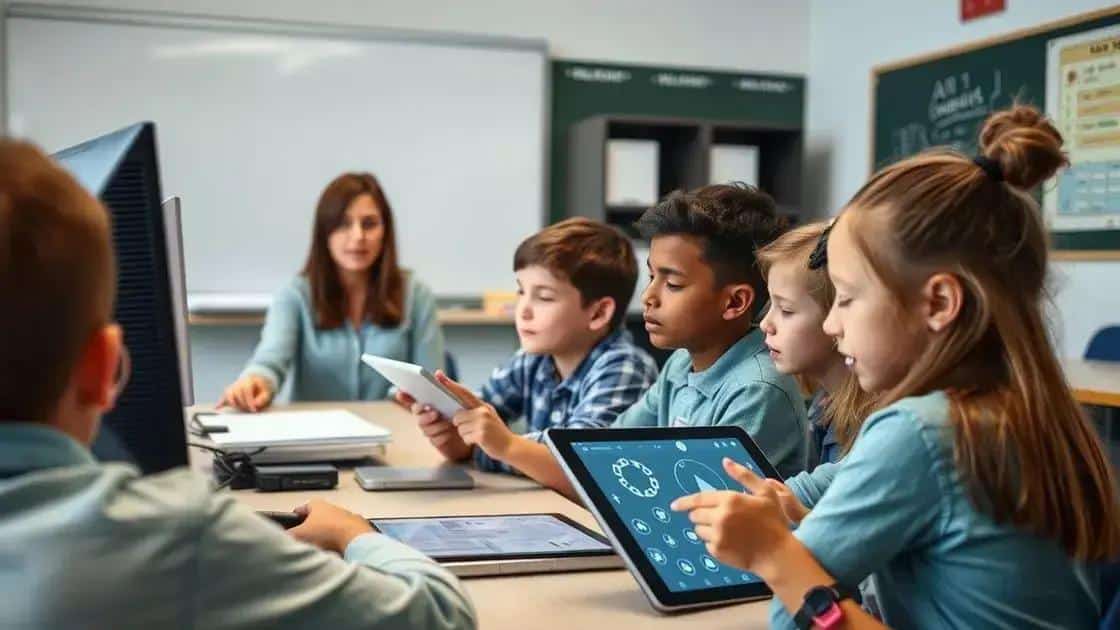
Artificial Intelligence (AI) is changing the way teachers teach and students learn. With its powerful tools, AI can enhance education, making it more effective and enjoyable for everyone involved.
One of the biggest benefits of AI for teachers is the ability to automate administrative tasks. This means teachers can spend more time focusing on personalizing instruction for their students. When routine tasks like grading assignments are handled by AI, educators can dedicate more energy to engaging students in meaningful ways.
How AI Benefits Teachers
AI provides numerous advantages for teachers, including:
- Data-driven insights: AI analyzes student performance data, allowing teachers to identify areas where students may need extra help.
- Tailored lesson plans: With AI, educators can create custom lesson plans that fit the unique needs of each student.
- Time efficiency: By automating tasks, teachers can focus more on teaching and less on paperwork.
For students, the benefits of AI are equally impressive. Learning becomes more interactive and personalized. For example, AI-driven learning platforms can adapt to each student’s pace and style of learning, ensuring that everyone can grasp the material comfortably.
Enhancing Student Learning
AI tools can provide students with real-time feedback, which is crucial for understanding difficult concepts. Instead of waiting for grades, students can learn where they need to improve immediately. Furthermore, AI can offer additional resources, helping students access materials that match their interests.
Moreover, AI makes learning more engaging. With features such as gamification and virtual simulations, students can explore subjects in more exciting ways. This not only keeps them motivated but also helps them retain information better.
real-world applications of AI in education
AI is making significant strides in the education sector. Its real-world applications are transforming classrooms and enhancing learning experiences for both teachers and students. From personalized learning to administrative tasks, AI is creating opportunities that were previously unimaginable.
One fascinating application of AI in education is through adaptive learning platforms. These platforms adjust the difficulty of lessons based on a student’s performance. This means if a student struggles with a topic, the system can provide more practice and tailored resources until they master it.
Examples of AI in Education
Several schools and universities are already implementing AI to improve education. Here are some notable examples:
- Intelligent Tutoring Systems: These systems provide one-on-one tutoring to students, offering help in subjects like math and science.
- Automated Grading: AI-driven tools can grade essays and tests, saving teachers time and providing immediate feedback to students.
- Language Learning Apps: AI is used in apps like Duolingo to tailor lessons based on individual progress and learning styles.
Another important area where AI is proving beneficial is in data analytics. Schools are using AI to analyze student data to track performance, attendance, and engagement. This insight helps educators identify students who may need additional support and allows schools to develop targeted interventions.
Furthermore, AI integration in virtual classrooms has become essential, especially in recent years. With online education on the rise, AI is being used to facilitate interactive learning experiences, using tools that engage students in real-time.
future of AI in educational environments
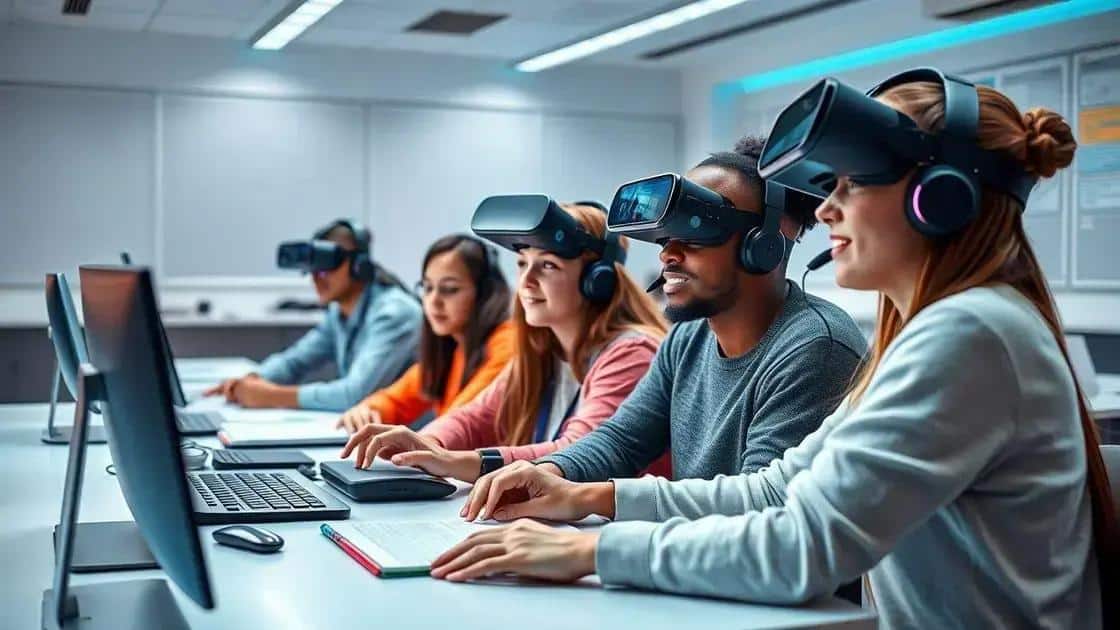
The future of AI in educational environments promises exciting developments that will reshape how we teach and learn. Embracing artificial intelligence can lead to a more efficient and engaging learning experience for students and educators alike.
As technology advances, we can expect AI to provide more personalized educational experiences. Imagine a classroom where each student has a virtual assistant tailored just for them. This assistant could help answer questions, provide additional resources, and even adapt lessons to fit their preferred learning style.
Innovative AI Tools on the Horizon
Several innovative tools are emerging that could redefine educational practices:
- AI-Driven Content Creation: Soon, teachers may have AI tools that help create customized lesson plans or educational materials using student data for guidance.
- Enhanced Virtual Reality: AI will enhance VR learning experiences, making them more immersive and interactive.
- Real-Time Language Translation: In multilingual classrooms, AI could provide instant translation services, allowing students from diverse backgrounds to communicate easily.
Additionally, AI has the potential to assist in identifying learning challenges early on. By analyzing student interactions and performance data, AI can help educators tailor interventions before a student falls too far behind. This proactive approach can significantly enhance student success.
AI in education will also focus on fostering collaboration. With intelligent learning systems, group projects can be more efficient, as AI organizes tasks and monitors group dynamics. This will teach students valuable teamwork skills necessary for future careers.
FAQ – Frequently Asked Questions about AI in Education
How will AI change teaching in the future?
AI will assist teachers by automating routine tasks and providing real-time insights, allowing them to focus more on personalized instruction.
What are adaptive learning platforms?
Adaptive learning platforms use AI to tailor lessons to individual student needs, helping them learn at their own pace.
Can AI help identify students in need of support?
Yes, AI can analyze student data to pinpoint those who might need extra help, enabling timely interventions.
How can AI enhance classroom collaboration?
AI tools can organize group projects and monitor dynamics, making teamwork more efficient and preparing students for future collaborations.
